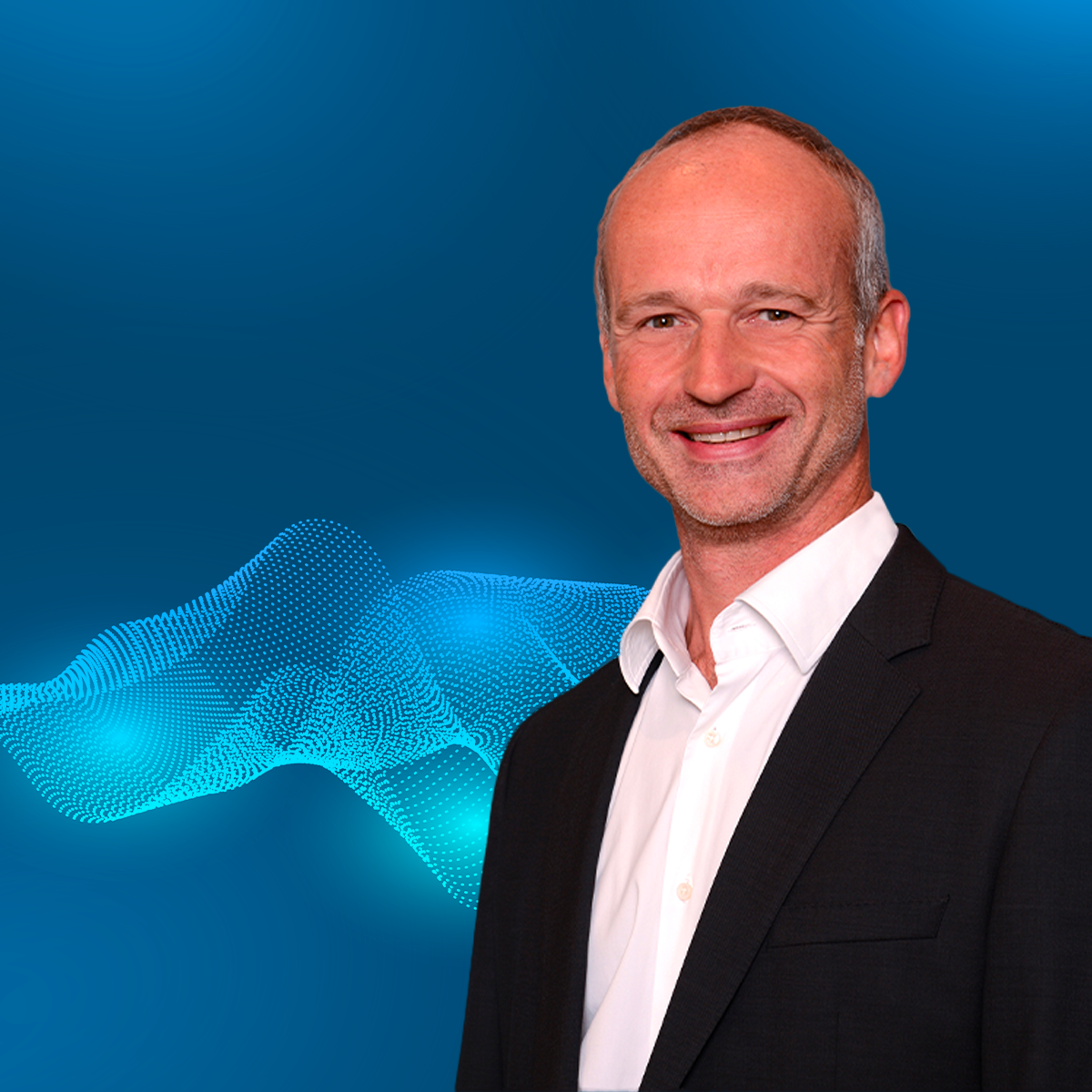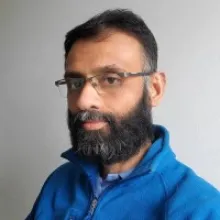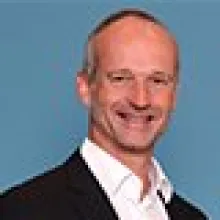What's Next in PLM? with Stéphane Declée of ENOVIA - Part 1
Discover the current trends and challenges of product lifecycle management (PLM) solutions with Stéphane Declée, CEO of ENOVIA.
Designing Impactful Innovation podcast - episode 9
In this episode, Stéphane Declée, CEO of ENOVIA, and Arvind Krishnan, Industry analyst at Lifecycle Insights, discuss the trends and challenges of product lifecycle management (PLM) solutions today.
What are manufacturers’ expectations of PLM solutions? What is an innovation platform and how can it help manufacturers optimize their product development? Tune in to find out.
Meet our speakers
We also see that there is a need to really connect the dots across organizations. For a long time, PLM was the tool for engineering…eventually extending a little bit to manufacturing. But we see now more organizations, even strategy, finance, marketing, procurement which also need to be connected not only to consume data, but also to bring back their own perspective and concern requirements to make sure that they are taken into account upfront in the process.
You can follow the "Designing Impactful Innovation" podcast on Apple podcasts, Spotify, Deezer, YouTube or by RSS.
Stay tuned!
Read the transcript
Clara: Hello and welcome to the Designing Impactful Innovation podcast. I’m Clara, your host. Today, Arvind Krishnan of Lifecycle Insights will be talking about the trends and challenges of product lifecycle management, or PLM, with Stéphane Declée, CEO of ENOVIA. Handing the mic over to you Arvind!
Arvind: Good day, everybody, and welcome to this podcast. Stéphane, I know you're a very busy person, I appreciate you taking the time for our chat today and thank you very much for your time.
Stéphane: Thank you Arvind, it’s really a pleasure. Actually, obviously I love this topic, so it's a pleasure to be with you and all the people listening to us. Of course.
Stéphane: Of course, I will be very brief, you know. Actually, as you said, my name is Stéphane Declée, I’m right now the CEO of the ENOVIA brand at Dassault Systèmes.
We focus globally on our platform, collaboration and of course, all our PLM services and processes. Actually, I joined Dassault Systèmes a long time ago, back in 1991. But my first job, starting my professional life, started in R&D where I stood for several years until I actually took the responsibility of the strategy for Dassault Systèmes. This was back in the 1999 timeframe.
I moved to the US to take over the ENOVIA R&D organization at that time. I spent seven years in the US – a great time with the family, kids, everybody – before moving back to France, moving to the industry as a newly created industry organization at that time.
And finally in 2016, as I said, I took over the ENOVIA CEO position, really driving and in charge of strategy, and of course, driving the portfolio evolution and the business; engaging with clients and supporting our global direct and indirect sales teams.
Arvind: Stéphane, that was a fantastic career. So you've been in development, you've been in strategy, you've been in charge now of the whole portfolio. So you've seen it all, right? And I think there will be no better person to talk about the PLM strategy of Dassault Systèmes with us.
So let us start straight away with a topic that is extremely dear to you: product lifecycle management. I'm sure you're seeing some new trends with your customers, especially when it comes to using the PLM solutions.
Stéphane: I think it's a very interesting question. Actually, and for the ones who don't know or maybe don't remember, or were not there at the time – so globally, I mean, roughly PLM was, somehow – the term was invented, I think back in 1999. At the same time, I moved to this strategic position.
Actually, this term, interestingly enough, has been invented actually by Dassault Systèmes and IBM at that time. And we have been promoting and educating… and there was a big world tour with our CEO and IBM executives to tell about the PLM story. But indeed, as you said, Arvind, there have been many changes, especially external changes that had a significant impact on the expectation and the evolution of PLM as a solution.
So I think there are two main kinds of, I would say, topics, or impacts, or influence. One is linked to the market itself. So we have also been discussing that a lot in the last years already in Dassault Systèmes: this transition from what we say product to experience, which is really about taking into account the full aspect of the product in use during the product creation process and time. Of course, including interaction with the client, but also all the services and all the – and even the business model associated to the business you are bringing or you are building with those products.
But the other aspect which is also linked to that is the evolution of the clients’ needs – you know, specialized products and actually now sustainability, which is really also becoming a user consumer mandate, more than ever.
But then there's also business changes: globalization, and now we are also challenging this model, but we have more and more – and many clients need to work with a distributed, remote workforce, which actually drives strong requirements on PLM to be available anytime, anywhere, and also increases requirements for traceability, accountability, as you get more people engaged, and potentially people outside of your organization.
Product complexity: moving from product to experience. One part of it actually is to have more and more complex products. Mixing mechanical systems or parts assemblies, but also mechatronics – so electronics, software – and you have to make it all work together and you have to go faster in delivering them.
So actually, complexitiy is driving complexity in the processes and how you manage your organization, but also complexity in how to guarantee quality for those products. I see quality as really being also a growing concern with many, many clients.
And finally, we also see that there is a need to really connect the dots across organizations. For a long time, PLM was the tool for engineering…eventually extending a little bit to manufacturing, of course; engineering, but also manufacturing, execution, production.
But we see now more organizations, even strategy, finance, marketing, procurement – I think we are going to come back on this later – which also need to be connected not only to consume data, but also to bring back their own perspective and concern requirements to make sure that they are taken into account upfront in the process. So this is, I think, a big and important point.
And last but not least – I mentioned it briefly before – sustainability is really also driving a big change in both the requirements for PLM, but more globally, engineering processes and also what the engineers need to take into account when designing, defining the next generation of market-leading products that they have to deliver.
Arvind: Well, Stéphane, thank you for a little bit of history. Actually, I had no idea that Dassault Systèmes and IBM came up with the product lifecycle. So that's a nice trivia question 30 years later, right. And you know, it's also interesting: I noticed that you mentioned the word sustainability at least three times in your answer.
So, I'm almost sure that people's expectations when it comes to sustainability have changed quite a bit. And I'm very happy to hear from you that Dassault Systèmes is actually taking this very seriously and is able to empower organizations to actually transform themselves using this. Now, let me come to a term that, initially, was a little cryptic to me.
I know Dassault Systèmes uses the term “innovation platform” rather than PLM, right? Could you tell me why you decided to go with this name?
Stéphane: Ah yes, it’s a good question actually, and I can acknowledge that sometimes at Dassault Systèmes we are launching on the market some cryptic words or concepts. I can acknowledge this for sure.
So, there are several things here that I think are important. If you take – and I know that not yet all businesses have adopted PLM, but still a few, a lot of them have already. And for me they’ve adopted what I’m calling the third generation of PLM.
Well, really the main mission, the main reason for adopting was really to take control over the data that we are proliferating in the product development engineering organization. To secure them, to put them in configuration, version control, to be able to follow their evolution, to make sure that people are working on the latest version of specific artifacts, data, and that’s been used to connect, to create some automation in connecting engineering to production, so to manufacturing.
But it was really more about, kind of a backend system. And actually when you look at many clients, actually PLM is not the tool of use of people. It has been a big topic for IT organizations. Actually, some clients have created dedicated teams that were responsible of taking engineering data and putting them in the right place under configuration, and so it was really more a backend system. And what I think is really critical in this transformation that we were discussing before in terms of speed, complexity, engaging more people across multiple organizations is actually to make PLM become a system for people.
When we speak about an innovation platform, this is really what we meant. It has to become a system for people. It has to become the system where people go, before they want to go, - not only before they need to go. And eventually, and this is my dream – even if we still have some work to do, I know – to make it something that really creates value and is almost fun to use by people. That could be the ultimate dream. And actually, collaboration is highly correlated to innovation.
Arvind: Absolutely.
Stéphane: And I think that we are not the only ones to say that. We know that for many businesses, innovation and bringing new competitive disruptive products to market is not only the reason for business but also the condition for surviving. So at the speed, which is always accelerating, with, as we said, many, many and increasing constraints that they have to deal with.
And so this drive for multi-disciplinary, multi-location and multi-dimension problems to solve is really bringing the need for this global collaboration: making sure that everybody is able to access the right data they need at the right time for the purpose, activity or action that they have to complete at a given time. And again, expanding to other organizations that potentially may not understand the complexity or the increasing complexity of products, configuration management and all this kind of stuff.
So this is really where we are. We have been, as we just mentioned, almost for 40 years, developing solutions for product development. We had a long history with different products that we have evolved over time. But really the driver for the development we had and both the thinking, the development and then the delivery of what we call 3DEXPERIENCE, and all the associated suite of products has been really driven from this perspective.
Arvind: You know, Stéphane, it was very interesting when you said taking control of data. It just reminded me of how important it is for people like us to take control of our lives. I mean, I can see a great parallel as to how this influx of engineering data in companies today is creating havoc for executives. And you also mention innovation is associated with close collaboration and communication. And there can be nothing farther than that, because if you really think about after COVID, the world has actually gone further apart from each other. But that doesn't stop companies from doing what they do. They have to produce components. They have to market, they have to serve their customers. And I think it's an interesting point where innovation and engineering completely depends on how effectively teams collaborate and deliver.
Stéphane: It is really interesting and to echo on this – so of course, COVID has been a difficult time with some dramatic consequences in many countries, that we should not diminish in any way, of course. But for businesses, actually, it has been an accelerator for being conscious about the importance of virtual – we prefer this to digital, we can come back on this – but virtual space and connecting people in a different way than at the coffee machine in the morning or during the break. And I think it’s interesting because you know recently we had a big user event that was hosted by one of our famous clients, Jaguar Land Rover, in the UK.
We were there in their facility in Gaydon with users from all places and I asked a question to my friend Jose Garcia-Urruchi. Jose is the head of digital design engineering and basically driving the PLM transformation that we have been engaging with JLR for the last years. He has been working with many different solutions, working with the Generation One PLM for many years, 18 years, before discovering the solution from Dassault Systèmes that he didn’t know before joining this company.
And I asked him: So, Jose, what do you see in the 3DEXPERIENCE platform, ENOVIA, and the other products compared to your past experience? And his answer was really aligned with what we just discussed. He said that what he saw with the solution he was using, that it was first and foremost a collaboration platform. And he is using it himself to connect and interact, collaborate with his own team.
And he said, actually, that the COVID time actually has been a big driver to reveal those capabilities, those new possibilities to his team and really help him to accelerate the change in mindset, which is as important as the change of solutions, as we know, and get people to leverage these capacities. So I think that this really illustrates this transition well.
Arvind: Thank you for sharing your experiences that you had with JLR. You know, let me just take a little diversion and introduce to the audience today about a study that Lifecycle Insights did earlier this year. The objective of that study was to really understand: where is PLM heading? And we will get back to this in our discussion today with Stéphane.
And in that study, it was not that surprising that over a third of respondents cited supply chain procurement as their foremost challenge in product development. Again, it's not bringing new ideas or products, but it's really managing supply chains and procurement. Right? And Stéphane, we all know COVID created another big problem in addition to the health crisis, a problem where supply chains literally stalled and that created problems all over from the automotive industry, all the way to consumer products, and so on.
Stéphane: Actually it's a very good topic because it will help me to illustrate what I was mentioning before related to the imperative to connect talents, to connect people from different organizations. You mentioned COVID, but, you know, disruptive events will not only be about COVID or health threats. It can be about climate threats, and unfortunately we are more likely to see more and more of them. Political threats, and all those kinds of things can create a situation whereby actually your beautiful plans and beautiful existing setup can be challenged.
So when you think about supply chain and procurement, those are today two siloed organizations. And the reality today is that this problem, which is a very complex problem, will not be able to be solved if you just ask those organizations to solve it. You will have to connect them together and with other people. So this is really a fantastic example for which connecting the dots between engineering, manufacturing, supply chain, procurement and even caustic, actually, will have the real impact.
Like for many topics, we can say it for sustainability. I can say it here for procurement or supply chain, almost 60, 70% – whatever ratio you come with at the end – of the decisions that will impact those downstream activities, are originated, created somehow, back in the design and manufacturing, engineering of those specific products and systems. So without connecting the organizations, without helping those upstream organizations to understand the impact of what they are doing and eventually evaluate alternative solutions upfront before you have committed physical capital and you have started to allocate OpEx to those activities, which are usually very expensive…
So there's a huge opportunity, actually, to improve, and to provide flexibility. The earlier you go the more flexibility you have to change. It’s very hard to change when you are down the production line, hoping or guessing if the part you have ordered is going to arrive on time, whatever it is: an electronics part – and we know that they are very scarce right now – but also special material part that is critical to achieve the performance or whatever functions of your vehicle.
So I think this is really the unique value of what we call Virtual Twin Experience that can be applied to engineering, manufacturing, but also supply chain at all and the ability to connect it to real time past or current data. So you can play what-if scenarios and understand the impact of what you are doing.
Just to give a practical example again: today we are working with manufacturers in the automotive industry to help them, actually, understand first and then play with defined scenarios and ultimately take appropriate decisions to understand the impact of raw materials cost evolution. And we know that for some of them there is a high volatility these days. We can have a dramatic impact on the actual cost of products you are making, especially cars, especially when you are at the volume that those industries have to fulfill. And for many of them, the low margin at which they are operating.
So understanding and making the link between raw materials, your different products, cars, your portfolio, the different configurations and understanding the sensitivity of those end-products to those fluctuations.
Understanding what are the alternative potential parts, suppliers from different locations eventually. And then validate from an engineering standpoint upfront the transition or the change from one part to the other, one material to the other to ultimately optimize the end-cost and margin of your products, I think is the kind of value and scenario that is now possible: connecting PLM – should we still call it PLM, I don’t know, but really connecting it to – the real life.
So, it's really a trend that we see a lot as well: connecting the virtual world to the real world. And again to provide to the people inventing new products or people producing those products to really understand what is going to happen and be able to take, upfront, the best decision.
Arvind: I'm glad you said that many companies actually took their supply chains for granted and they've been so complacent over the decades and they really found out to their shock that that can be. And I'm also happy you mentioned how they are not no longer helpless. The Virtual Twin Experience actually provides them with an opportunity to study the impact of their design and manufacturing engineering decisions.
All the way through their supply chains and even the end of life of their products. And I think that's fascinating, I should say, as an engineer and being in an engineering organization, to be able to actually study that and make decisions that will come maybe months or years later. For example, if you're talking about new production lines for airplanes or things like that, we are really talking years later. You can actually have the idea to foresee. And that's fascinating.
Clara: Thank you Arvind and Stéphane. For our listeners, if you want to know more about the Lifecycle Insights study on PLM, head over to 3ds.com/cloud. Stéphane and Arvind will be joining us again to discuss the future of PLM, so stay tuned! Don’t forget to subscribe for more insights and stories from our guest experts!
Learn more
Ready to learn more?
See how the 3DEXPERIENCE platform on the cloud can transform your business. Fill out the form to get in touch with our experts.







